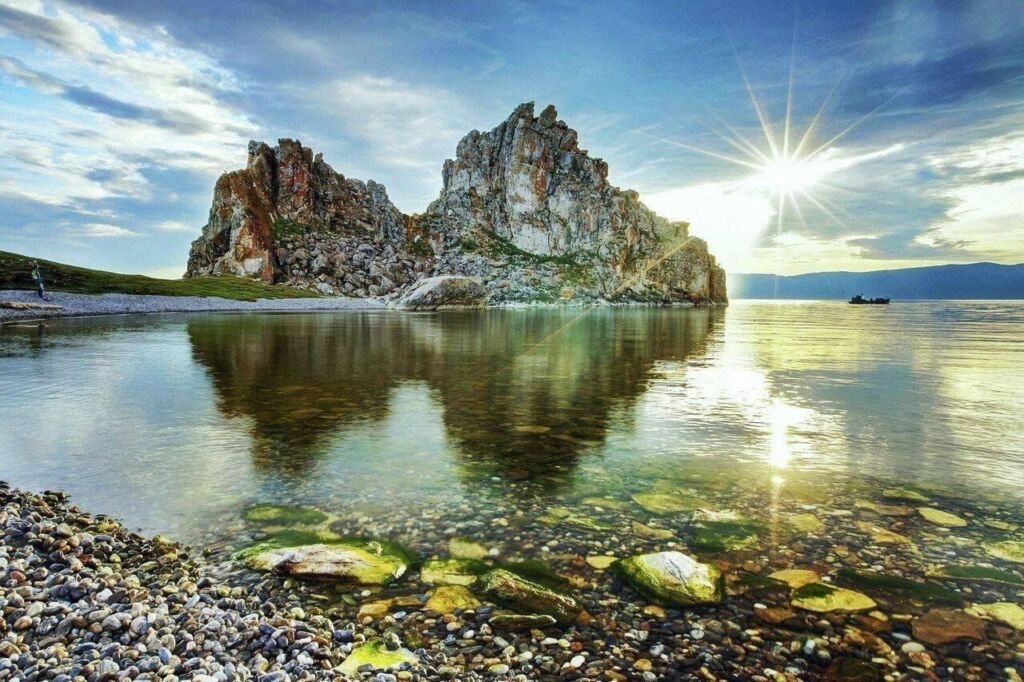– the deepest lake on Earth – 1642 meters, it can be compared with five Eiffel towers;
– the largest reservoir of fresh water on Earth, Baikal contains about 90% of Russia’s fresh water, or 19% of the world’s freshwater reserves;
– the surface area of Baikal is approximately equal to the area of Belgium, and exceeds the area of Armenia, Albania, Israel and many other countries of the world;
– the width of the lake at its narrowest point is 24 km, and at its widest – 79 km; its length from edge to edge reaches 636 km;
– the ice of Baikal has very low mineralization, which is why it is the most transparent, hardest and most slippery in the world;
– in winter the ice thickness reaches 2 meters;
– water transparency – 40 meters;
– surface water layers do not exceed 9–10 °C (in summer);
– 336 rivers, rivers and streams flow into Baikal, but only one flows out – the Angara;
– if the lake suddenly stopped replenishing with water, but continued to flow through the Angara, then the water contained in it would be enough for 350 years;
– to completely fill Lake Baikal if it suddenly became empty, it would take the waters of all the rivers of the Earth in about a year.
- About
- Honduras
- Lofoten Islands
- Win a four-night Greek getaway for two in one of the most stylish resorts in the Aegean courtesy of Sani Resort
- Kyrgyzstan
- How to Get Around Australia
- With a Movie Camera in Kamchatka
- Irkutsk
- Nicaragua
- Liberation of Belarus from the Nazis
- Mammoths and travel: where to see habitats, traces and digs, and museums
- Travel to Cambodia
- Sydney
- Hiroshima’s nuclear blast: how tragedy reshaped travel routes
- Chechnya
- Treasure in the Cape Cod fog: A Thai traveler’s encounter with pirate history
- Bolivia
- Ratmanov Island
- Cod Wars
- Aztecs











